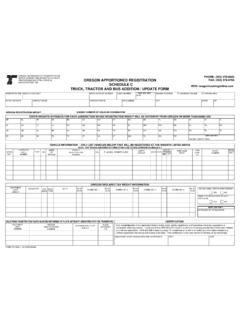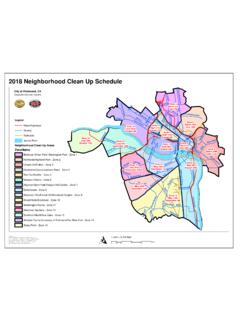Transcription of Use of a Reduced (4-Dose) Vaccine Schedule for ...
1 Department of health and human servicesCenters for Disease Control and PreventionRecommendations and Reports March 19, 2010 / Vol. 59 / No. RR-2 Morbidity and Mortality Weekly of a Reduced (4- dose ) Vaccine Schedule for Postexposure Prophylaxis to Prevent Human RabiesRecommendations of the Advisory Committee on Immunization Practices MMWR The MMWR series of publications is published by Surveillance, Epidemiology, and Laboratory Services, Centers for Disease Control and Prevention (CDC), Department of Health and Human Services, Atlanta, GA Citation: Centers for Disease Control and Prevention. [Title]. MMWR 2010;59(No. RR-#):[inclusive page numbers].Centers for Disease Control and PreventionThomas R. Frieden, MD, MPHD irectorPeter A. Briss, MD, MPHA cting Associate Director for ScienceJames W. Stephens, PhDOffice of the Associate Director for ScienceStephen B.
2 Thacker, MD, MScDeputy Director for Surveillance, Epidemiology, and Laboratory ServicesEditorial and Production StaffFrederic E. Shaw, MD, JDEditor, MMWR SeriesChristine G. Casey, MDDeputy Editor, MMWR SeriesTeresa F. RutledgeManaging Editor, MMWR SeriesDavid C. JohnsonLead Technical Writer-EditorJeffrey D. Sokolow, MAProject EditorMartha F. BoydLead Visual Information SpecialistMalbea A. LaPeteStephen R. SpriggsTerraye M. StarrVisual Information SpecialistsKim L. BrightQuang M. Doan, MBAP hyllis H. KingInformation Technology SpecialistsEditorial BoardWilliam L. Roper, MD, MPH, Chapel Hill, NC, ChairmanVirginia A. Caine, MD, Indianapolis, INJonathan E. Fielding, MD, MPH, MBA, Los Angeles, CADavid W. Fleming, MD, Seattle, WAWilliam E. Halperin, MD, DrPH, MPH, Newark, NJKing K. Holmes, MD, PhD, Seattle, WADeborah Holtzman, PhD, Atlanta, GAJohn K. Iglehart, Bethesda, MDDennis G.
3 Maki, MD, Madison, WISue Mallonee, MPH, Oklahoma City, OKPatricia Quinlisk, MD, MPH, Des Moines, IAPatrick L. Remington, MD, MPH, Madison, WIBarbara K. Rimer, DrPH, Chapel Hill, NCJohn V. Rullan, MD, MPH, San Juan, PRWilliam Schaffner, MD, Nashville, TNAnne Schuchat, MD, Atlanta, GADixie E. Snider, MD, MPH, Atlanta, GAJohn W. Ward, MD, Atlanta, GAContEntSIntroduction ..1 Methods ..2 Rationale for Reduced Doses of Human Rabies Vaccine ..2 Revised Rabies Postexposure Prophylaxis Recommendations ..5 Vaccination and Serologic Testing ..7 Management of Adverse Reactions, Precautions, and Contraindications ..7 Variation from Human Rabies Vaccine Package Inserts ..7 References ..8 Vol. 59 / RR-2 Recommendations and Reports 1 Use of a Reduced (4- dose ) Vaccine Schedule for Postexposure Prophylaxis to Prevent Human RabiesRecommendations of the Advisory Committee on Immunization PracticesPrepared byCharles E.
4 Rupprecht, VMD, PhD1 Deborah Briggs, PhD2 Catherine M. Brown, DVM3 Richard Franka, DVM, PhD1 Samuel L. Katz, MD4 Harry D Kerr, MD5 Susan M. Lett, MD3 Robin Levis, PhD6 Martin I. Meltzer, PhD1 William Schaffner, MD7 Paul , MD81 National Center for Emerging and Zoonotic Infectious Diseases (proposed), CDC2 Kansas State University, Manhattan, Kansas3 Massachusetts Department of Public Health, Jamaica Plain, Massachusetts4 Duke University Medical Center, Durham, North Carolina5 American College of Emergency Physicians, Dallas, Texas6 Food and Drug Administration, Washington, District of Columbia7 Vanderbilt University School of Medicine, Nashville, Tennessee8 Oregon Department of Public Health, Corvallis, OregonSummaryThis report summarizes new recommendation and updates previous recommendations of the Advisory Committee on Immunization Practices (ACIP) for postexposure prophylaxis (PEP) to prevent human rabies (CDC.)
5 Human rabies prevention United States, 2008: recommendations of the Advisory Committee on Immunization Practices. MMWR 2008;57[No. RR-3]). Previously, ACIP recommended a 5- dose rabies vaccination regimen with human diploid cell Vaccine (HDCV) or purified chick embryo cell Vaccine (PCECV). These new recommendations reduce the number of Vaccine doses to four. The reduction in doses recommended for PEP was based in part on evidence from rabies virus pathogenesis data, experimental animal work, clinical studies, and epidemiologic surveillance. These studies indicated that 4 Vaccine doses in combination with rabies immune globulin (RIG) elicited adequate immune responses and that a fifth dose of Vaccine did not contribute to more favorable outcomes. For persons previously unvac-cinated with rabies Vaccine , the Reduced regimen of 4 1-mL doses of HDCV or PCECV should be administered intramuscularly.
6 The first dose of the 4- dose course should be administered as soon as possible after exposure (day 0). Additional doses then should be administered on days 3, 7, and 14 after the first vaccination. ACIP recommendations for the use of RIG remain unchanged. For persons who previously received a complete vaccination series (pre- or postexposure prophylaxis) with a cell-culture Vaccine or who previously had a documented adequate rabies virus-neutralizing antibody titer following vaccination with noncell-culture Vaccine , the recommendation for a 2- dose PEP vaccination series has not changed. Similarly, the number of doses recommended for persons with altered immunocompetence has not changed; for such persons, PEP should continue to comprise a 5- dose vaccina-tion regimen with 1 dose of RIG. Recommendations for pre-exposure prophylaxis also remain unchanged, with 3 doses of Vaccine administered on days 0, 7, and 21 or 28.
7 Prompt rabies PEP combining wound care, infiltration of RIG into and around the wound, and multiple doses of rabies cell-culture Vaccine continue to be highly effective in preventing human is a zoonotic disease caused by RNA viruses in the family Rhabdoviridae, genus Lyssavirus (1). Virus is transmitted in the saliva of rabid mammals via a bite. After entry to the central nervous system, these viruses cause an acute, progres-sive encephalomyelitis. The incubation period usually ranges from 1 to 3 months after exposure, but can range from days to The material in this report originated in the National Center for Emerging and Zoonotic Infectious Diseases (proposed), Lonnie King, DVM, preparer: Charles E. Rupprecht, VMD, PhD, National Center for Emerging and Zoonotic Infectious Diseases (proposed), 1600 Clifton Road, , MS G-33, Atlanta, GA 30333.
8 Telephone: 404-639-1050; Fax: 404-639-1564; E-mail: MMWR March 19, 2010years. Rabies can be prevented by avoidance of viral exposure and initiation of prompt medical intervention when exposure does occur. In the United States, animal rabies is common. In a recent study, approximately 23,000 persons per year were estimated to have been exposed to potentially rabid animals and received rabies postexposure prophylaxis (PEP) (2). With the elimination of canine rabies virus variants and enzootic transmission among dogs, human rabies is now rare in the United States, with an average of one or two cases occurring annually since 1960 (3).Prompt wound care and the administration of rabies immune globulin (RIG) and Vaccine are highly effective in prevent-ing human rabies following exposure. A variety of empirical schedules and Vaccine doses have been recommended over time, based in part on immunogenicity and clinical experience in areas of the world with enzootic canine or wildlife rabies (4).
9 As more potent vaccines were developed, the number of Vaccine doses recommended for PEP has decreased, and studies aimed at further revision and reduction of PEP schedules and doses in humans have been encouraged. By the latter half of the 20th century, a 4- to 6- dose , intramuscular regimen using human diploid cell Vaccine (HDCV) or purified chick embryo cell vac-cine (PCECV) was being recommended (5 8). In the United States, a 5- dose PEP Vaccine regimen was adopted during the 1980s (9 12). In 2007, when human rabies Vaccine was in limited supply, an ad hoc National Rabies Working Group was formed to reassess the recommendations for rabies prevention and control in humans and other animals. In 2008, a smaller Advisory Committee on Immunization Practices (ACIP) Rabies Workgroup was formed to review rabies Vaccine regimen options. This report provides updated ACIP recommendations regarding the use of a 4- dose vaccination regimen, replacing the previously recommended 5- dose regimen, for rabies PEP in previously unvaccinated ACIP Rabies Workgroup* was formed in October 2008 to review 1) previous recommendations; 2) published and unpublished data from both national and global sources regard-ing rabies PEP; and 3) the immunogenicity, effectiveness, and safety of a 4- dose PEP rabies vaccination regimen.
10 The ACIP Rabies Workgroup used an evidence-based process for consid-eration of a Reduced vaccination regimen in human rabies PEP. This approach consisted of a review of information available from basic and applied studies of rabies prevention. Because rabies is almost always fatal among immunologically na ve persons once clinical symptoms of rabies occur, randomized, placebo-controlled efficacy studies of Vaccine in humans cannot be conducted. The ACIP Rabies Workgroup reviewed six areas: 1) rabies virus pathogenesis, 2) experimental animal models, 3) human immunogenicity studies, 4) prophylaxis effectiveness in humans, 5) documented failures of prophylaxis in humans, and 6) Vaccine safety. Studies for review were identified by searching the PubMed database and other relevant references and by consulting subject-matter experts. When definitive research evidence was lacking, the recommendations incor-porated the expert opinion of the ACIP Rabies Workgroup members.
















